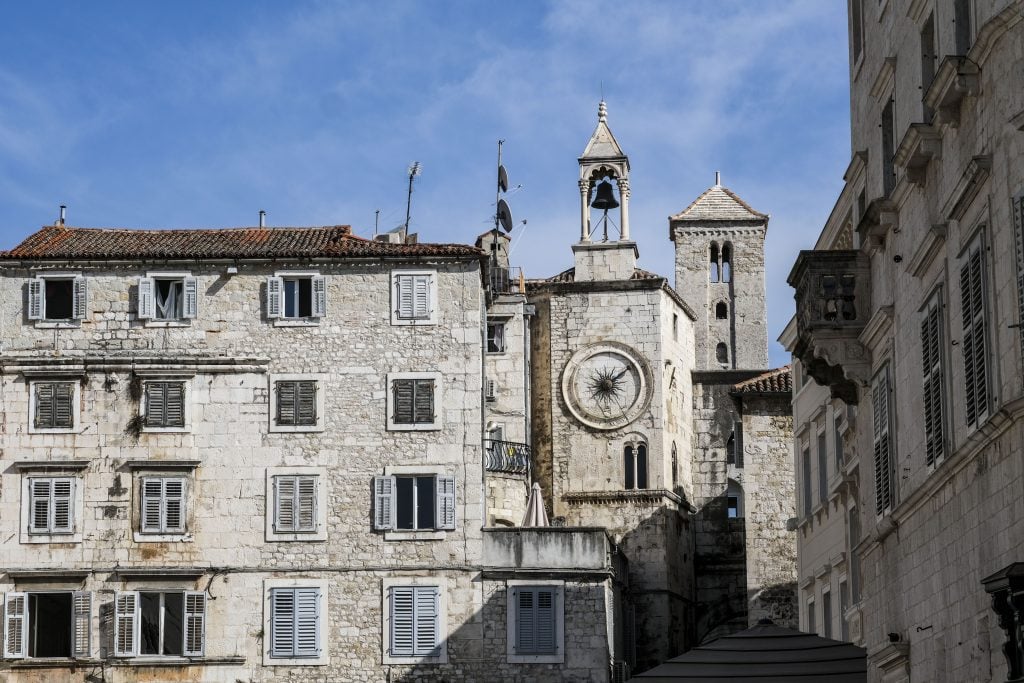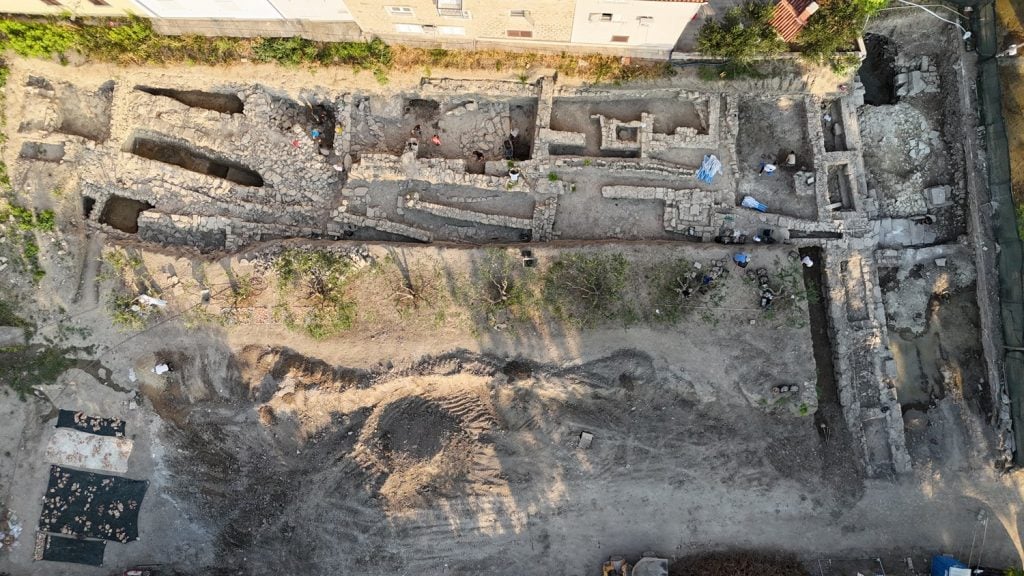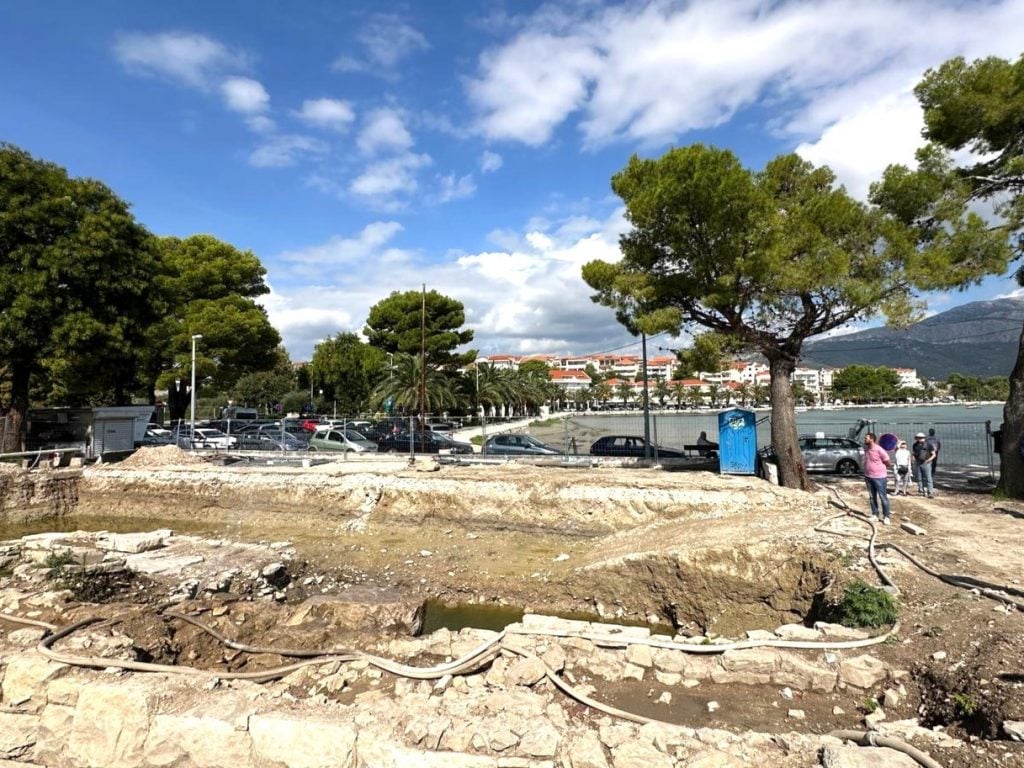Archaeology & History
Remnants of an Ancient Greek Settlement Unearthed in a Croatian Village
Known as Epetion, the settlement previously known only from ancient sources.

European cities are known for their historic old towns, and few have a historic old town as impressive as the Croatian coastal city of Split. There, modern shops, bars, and restaurants are housed inside a palace and military base that was originally built as a retirement home for the Roman emperor Diocletian during the 3rd century C.E.

The People’s Square in Split, Croatia. Photo: Jens Kalaene / picture alliance via Getty Images.
But the area actually offers another, older historic attraction—one that’s still in the process of being excavated. In the nearby town of Stobreč, archaeologists have excavated a three-meter tall, 70-meter long wall buried beneath the town’s modern-day architecture. More excitingly still, they revealed that this wall was part of an ancient Greek settlement known as Epetion.
Home to many a competent seafarer, ancient Greek city-states established colonies across the Mediterranean, transporting Greek culture and commerce from the straits of Gibraltar to the island of Cyprus. Colonization of Croatia is thought to have started during the 4th century B.C.E., with settlements popping up in Faros (now Stari Grad), Tragurion (Trogir), and Issa (Vis).

An aerial view of the excavation near Split. Photo: Ministarstvo kulture i medija.
Although mentioned by a number of ancient sources, the exact location of Epetion was eventually lost to time, making the discoveries at Stobreč all the more exciting. Emphasis is on discoveries, because the archaeologists working near Split did not just find portions of Epetion’s wall, but also the remnants of other structures that once made up the settlement.
Presumably founded sometime around the 4th century B.C.E. alongside other Croatian colonies, Epetion remained settled well into the Middle Ages, with structures dating from the Hellenistic, Roman, and post-Roman periods. Local news outlets describe one particular structure as a “megalithic construction with double gates,” whose size and location suggest the ancient settlement expanded over time.
Recent discoveries aside, archaeologists have been excavating in and around Stobreč for decades. The earliest excavations of the area began in 1969, when Mladen Nikolanci (an archaeologist with the Archaeological Museum in Split) and Aleksandra Faber (Institute of Archeology in Zagreb) concentrated on the town’s northern shoreline.

The excavation site looks out over the water. Photo: Ministarstvo kulture i medija.
These latest excavations coincide with an effort to pass a new piece of legislation called the Law on the Protection and Conservation of Cultural Property, which, if ratified by the Croatian government in Zagreb, would regulate the handling of cultural objects and strengthen legal protections of the country’s many historic sites—from the remnants of Epetion and Diocletian’s palace to the Dubrovnik-based set King’s Landing in Game of Thrones and House of the Dragon.
Proponents of the law argue stronger measures are necessary to protect Croatia’s rich heritage from urban expansion, which has been increasing in pace and scale for years as the country developed into one of the most popular tourist destinations for European vacationers.
To this end, excavations in Stobreč have two goals: to recover more of Epetion, and inform the planning of new construction projects.





